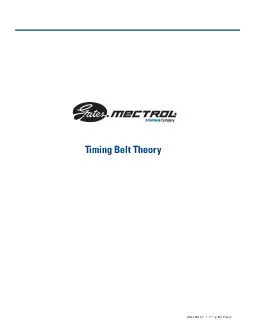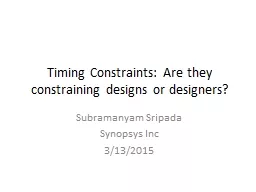PPT-A Designer’s Perspective on Timing Closure
Author : pamella-moone | Published Date : 2017-03-14
Greg Ford Introduction Timing closure is a key component of all design flows Integrated into nearly every step and process Automation important given the complexity
Presentation Embed Code
Download Presentation
Download Presentation The PPT/PDF document "A Designer’s Perspective on Timing Clo..." is the property of its rightful owner. Permission is granted to download and print the materials on this website for personal, non-commercial use only, and to display it on your personal computer provided you do not modify the materials and that you retain all copyright notices contained in the materials. By downloading content from our website, you accept the terms of this agreement.
A Designer’s Perspective on Timing Closure: Transcript
Download Rules Of Document
"A Designer’s Perspective on Timing Closure"The content belongs to its owner. You may download and print it for personal use, without modification, and keep all copyright notices. By downloading, you agree to these terms.
Related Documents














